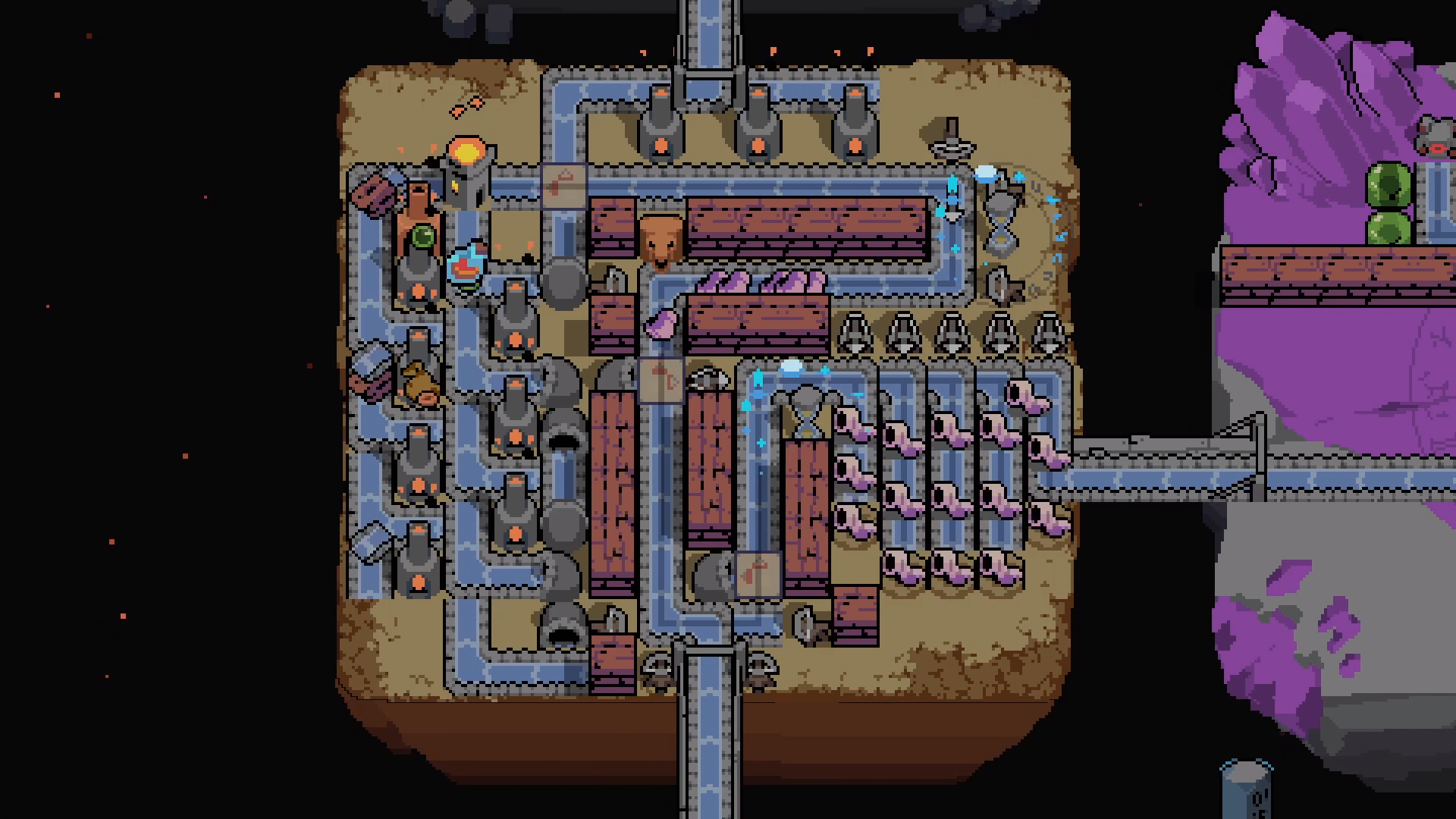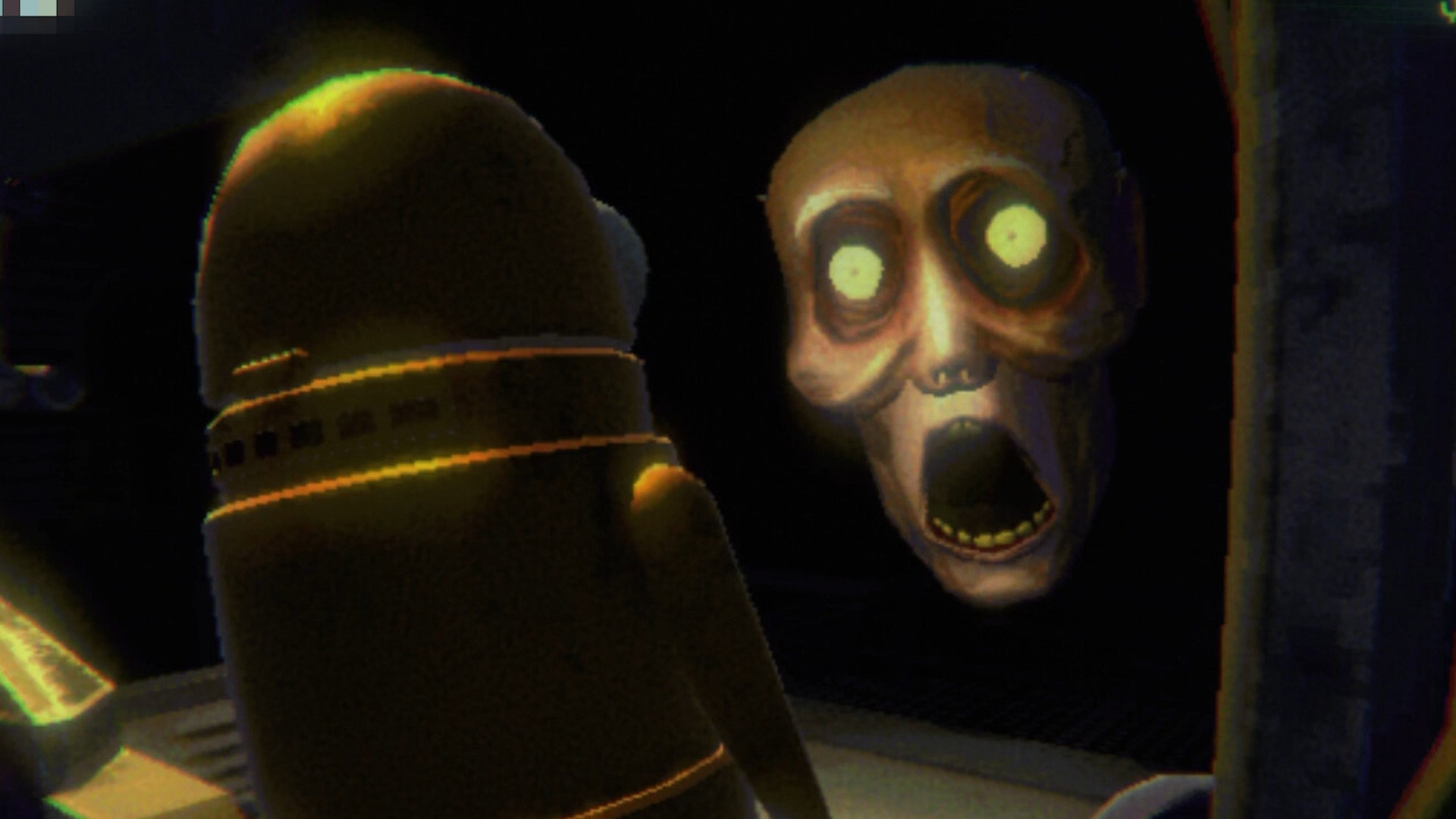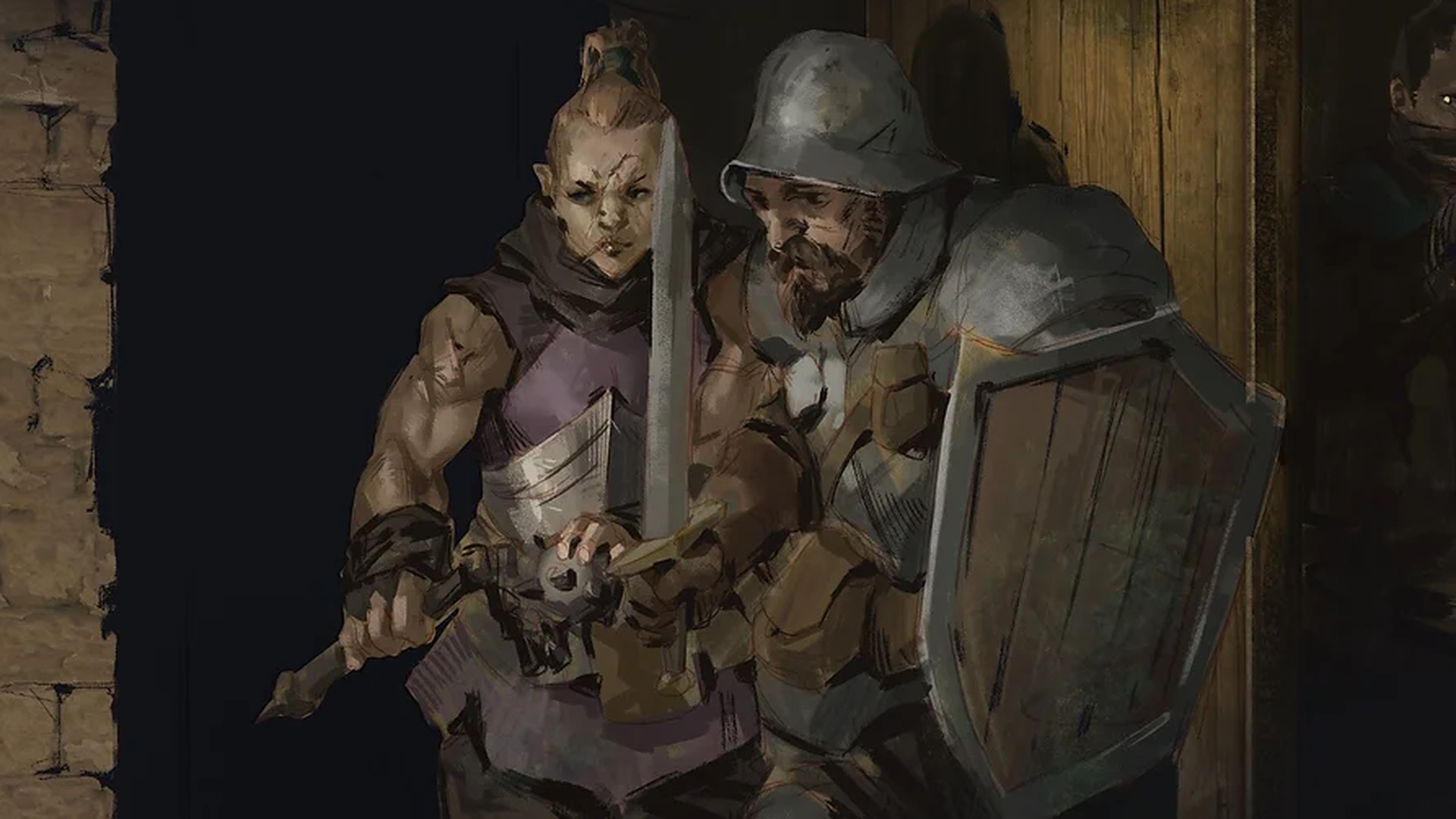When you first start Mob Factory, it seems like just a very simple tower defence game. There’s a hole in the ground. Worms come out of it. They follow a clearly marked path towards your castle. You set up crossbow towers, which shoot arrows at the worms, so that they die and don’t reach your tower. Easy. What’s next?
Oh, more worms. It’s just the same amount of worms every time spawning on a regular timer. I guess I don’t need to build any more towers? But then what happens next? Er, are the dead worm bodies supposed to be… piling up like that?
It quickly becomes clear that I’m thinking about this game all wrong. The worms aren’t a threat—sure, they can damage my castle, but they’re easily contained. What they are is a resource.
Turns out worm corpses can be used to make all sorts of things. Pick up six by clicking on them, and you can make them into an assembler building. (Do not ask me about the science of this.) I plop one down, and then use more bodies to make conveyor belts that shuffle remains from where the enemies tend to die over to the assembler, where it can fuse them together into bronze coins. (I am telling you, I do not have any answers about the science.)
Great, now I’ve turned the little square island I started on into an automated bronze coin machine. What can you do with bronze coins? Buy another island, of course!
(Image credit: LiterallyEveryone Games)
Once I’ve set up sufficient defences against them, the next island’s regularly spawning spiders provide me with web, the vital ingredient in many more recipes—including both silver coins that can be used to buy even more islands, and, brilliantly, extra worm tunnels. The tower defence has flipped on its head, as I deliberately set up extra spawn points for my enemies so they can provide me with even more raw material.
The more you make, the more islands you’re able to buy, and the more monsters—with their own unique resources and behaviours—you encounter. While a couple of crossbow towers is enough to clear out worms, it soon becomes more of a challenge to efficiently deploy the limited weapons at your disposal. Wooden blocks (made out of worms, naturally) can be used to divert enemies’ paths, forcing them to circle area-of-effect towers or stay within range of shotgun-like cyclops towers. If you’ve ever enjoyed ‘mazing’ in tower defence games, you’ll be in heaven here.
(Image credit: LiterallyEveryone Games)
Later foes carry their own challenges. Skeletons bearing shields can only be harmed from behind, forcing you to set up routes that expose their backs. Blobs, meanwhile, combine high health pools with literally eating any dropped resources you encounter, meaning you have to not only create a gauntlet of death to contain them, but quickly syphon the slime they drop out of the path of their kin before they much it all. Nice try, blobs, but there’s no ethical consumption under my capitalism.
Conveyor belts provide transport links between islands, ferrying ingredients to where they’re needed. Your entire archipelago quickly becomes not a kingdom you’re defending, but a huge factory to manage and tweak towards perfect efficiency.
(Image credit: LiterallyEveryone Games)
It’s brilliantly satisfying, and simple but charming pixel art and bouncy sprites help distract you from the idea that you’ve basically built an enormous monster abattoir. I’m reminded of 2021’s surprising gem Loop Hero, a game that similarly twisted a familiar genre into a sort of engine-builder, but I think Mob Factory’s combination of tower defence mechanics with Factorio-style automation may make it an even more engrossing puzzle.
If systematic worm slaughter sounds like your idea of a good time—and why wouldn’t it?—Mob Factory is available on Steam for £12.80 / $13.50, and you can get 10% off that until November 16.










